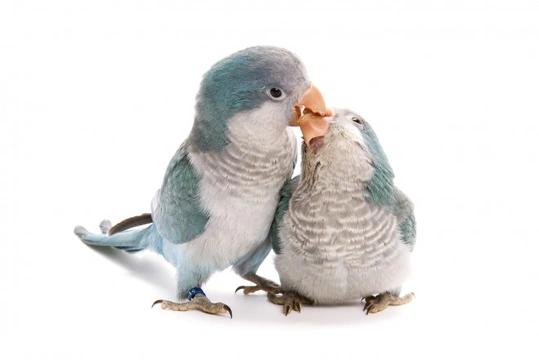
The Different Varieties of Quaker Parakeets
There are lots of very attractive parakeets in the world and most of them boast gloriously colourful plumage. Some of the prettiest are the Quakers and although small, these delightful birds make wonderful pets. They are a brilliant choice for first-time owners new to sharing their homes with parrots.
There are quite a few varieties of the Quaker parakeet and some of them have quite lovely names, like the Pied Cinnamon Blue Monk. Below is a list of some of the other colours and varieties all of which make wonderful pets and lively little pets.
The Blue
The Blue first appeared on the scene back in the forties in Belgium and their colour blue is truly gorgeous. Both parents need to carry the gene for their offspring to be this colour
The Parblue
This is another lovely colour variety and depending on their breeding and the amount of psittacin produced, dictates how much blue or green is seen in the bird's plumage. This variety is relatively new to the scene only first appearing in the States not so very long ago as such, this particular variety is still very much in its infancy.
The Lutino
This truly lovely and colourful variety of the Quaker parrot happens because of a lack of melanin production and as such there is no darker pigment evident in a bird's plumage that can interact with the “blue” as such the resulting colour is yellow. Both parent birds need to have the mutation for their young to be the same. These lovely birds first appeared on the scene in the States not so very long ago in 1996.
Pallid
The pallid is what's referred to as “an intermediate” mutation of the Lutino and the colour is achieved by less melanin being produced which means a little of it can then interact with a bird's main colour and this allows a little blue in their plumage which ultimately produces a gorgeous yellow/green bird.
Cinnamon
To produce a Cinnamon Quaker, breeds prevent brown pigment from converting to black pigment. If it is not allowed to interact with a bird's main structural colour, the result is a light brown plumage tinged with green. Again this variety first appeared on the scene during the 1980s in the Europe.
Fallow
Very similar to the Cinnamon, these lovely birds have red eyes and it's thought this variety might even be related to the Lutino. Again, these very attractive little birds first appeared in America back in 1996, but breeders have found it pretty hard to establish the mutation.
Greygreen
Greygreen Quakers are produced when their structural colour is darker. These lovely birds first appeared in Florida and it's thought in a natural colony. Since then, this variety has been established to become one of the more popular around.
Violet
This is one of the most recent varieties and mutation of the Quaker parakeet which is yet to be established, but breeders are working hard to do just this.
Creating New Mutations
Creating new mutations of these attractive parakeets is relatively easy with breeders combining any of the existing colour variations to produce a totally new type of Quaker parakeet. This can make it quite confusing for people when it comes to buying one or several of these very popular birds, the reason being that often it is not possible to know the bird's parentage and which mutations were paired together to produce any particular offspring.
As a result some breeders and fanciers started naming their combinations with prefixes like the following:
- Fancy
- White-faced
- Ice-blue
With this said, the most common of the colours is blue which breeders have established, others include cinnamon with newer and brighter variations appearing on the scene which are now being to referred to as “designer” Quaker parakeets.
Wild Quakers are an Endangered Species
Although, breeders are producing some amazing colour variations and mutations of the lovely Quaker parakeet, their wild cousins are actually an endangered species in their native habitats. In some regions of the UK and America large flocks of these birds have been introduced either by accident or on purpose and which are now considered as being a serious pest to the environment. Here in England many birds were captured and re-homed, but a percentage had to be put to sleep once they were eventually captured.
Conclusion
Offering any parrot or bird a home is a massive responsibility because many of these lovely, colourful birds boast pretty long lifespans which means it's a long-term commitment. You need to do as much research as possible before deciding to offer a Quaker parakeet a home knowing that you have the time to care for them in a safe and secure environment.



